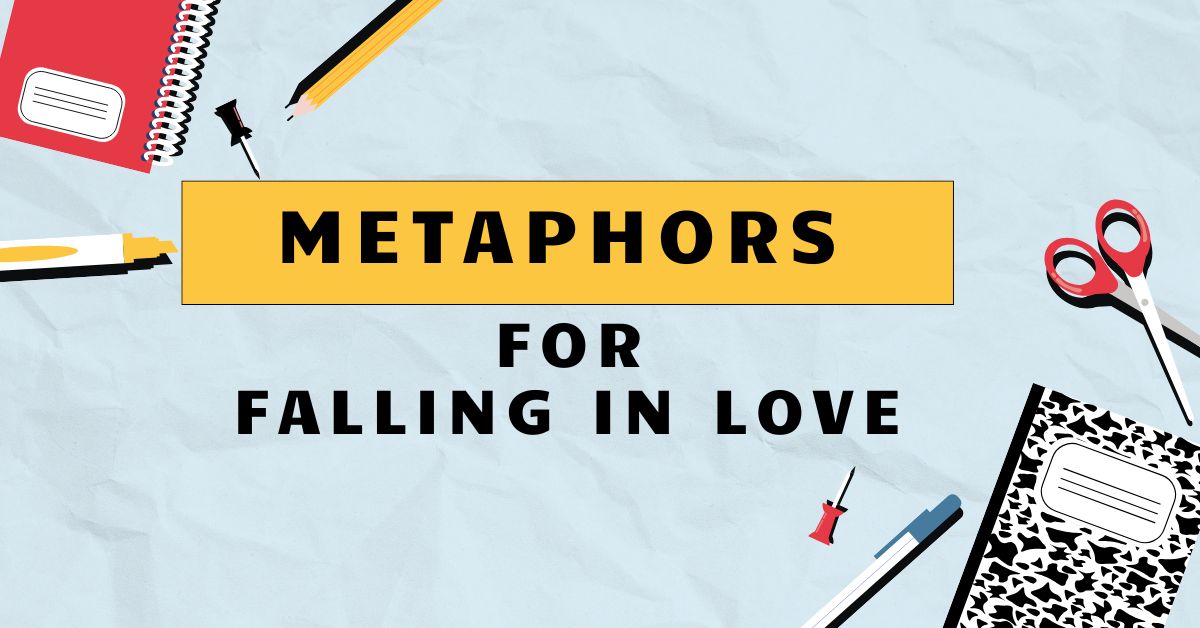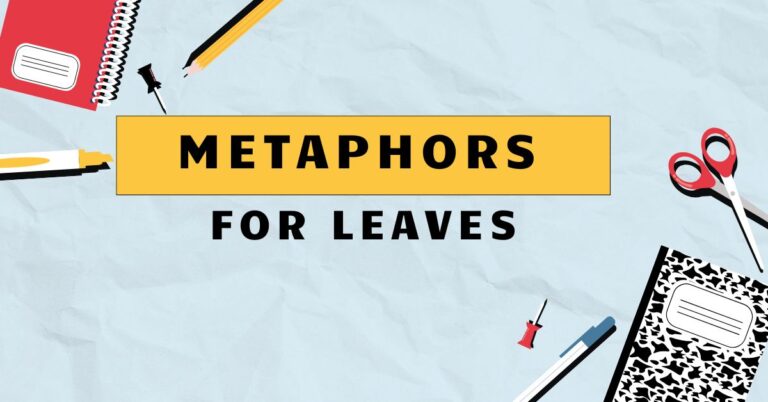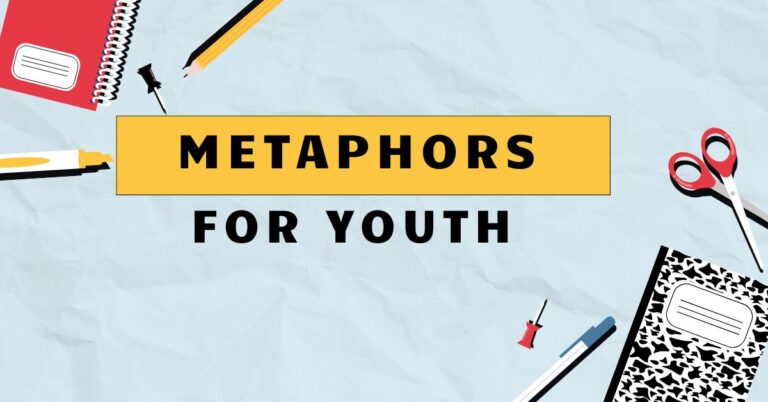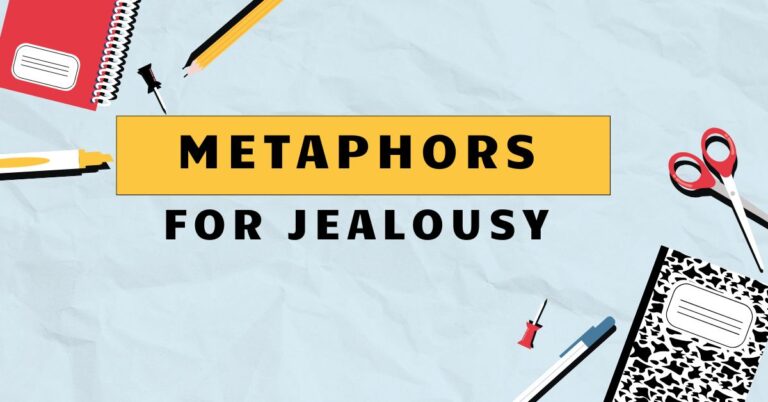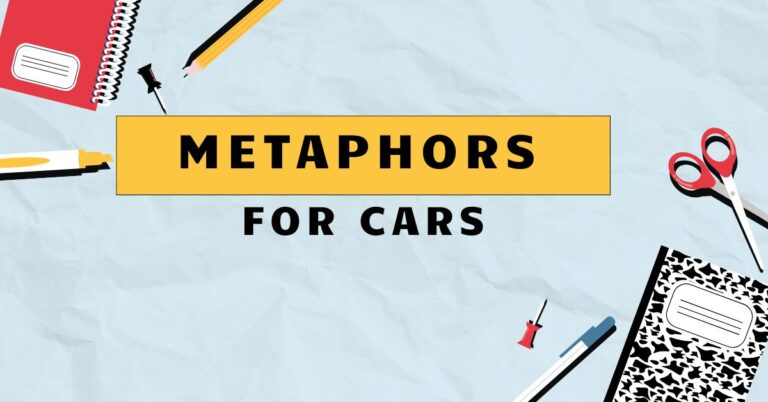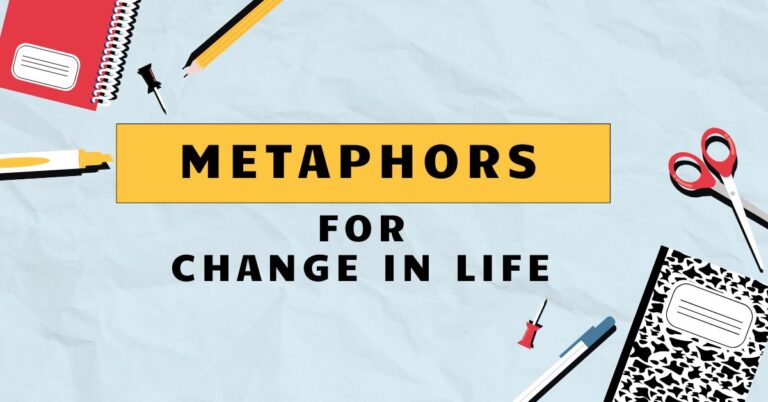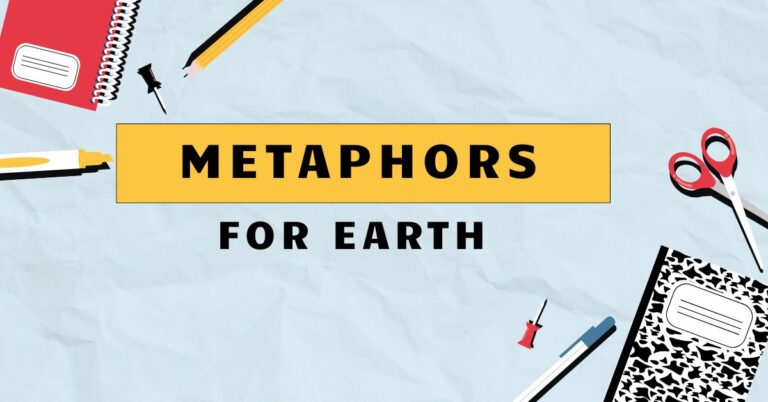43 Metaphors for Falling in Love: A Comprehensive Guide
Love, a complex and profound emotion, is often described using metaphors. Understanding these metaphors enhances our comprehension of both language and the emotional experience itself.
This article explores the various metaphors used to depict falling in love, providing insights into their grammatical structure, usage, and cultural significance. This guide is perfect for English language learners, literature enthusiasts, and anyone interested in the art of figurative language.
Table of Contents
- Introduction
- Definition of Metaphor
- Structural Breakdown of Love Metaphors
- Types of Love Metaphors
- Examples of Love Metaphors
- Usage Rules for Love Metaphors
- Common Mistakes with Love Metaphors
- Practice Exercises
- Advanced Topics in Love Metaphors
- Frequently Asked Questions
- Conclusion
Definition of Metaphor
A metaphor is a figure of speech that directly compares two unrelated things without using “like” or “as.” It asserts that one thingisanother, creating a vivid and often unexpected connection. Metaphors are crucial for understanding abstract concepts by relating them to more concrete or familiar ideas.
They enrich language and provide a deeper, more nuanced understanding of emotions like love.
In the context of love, metaphors allow us to express the intensity, complexity, and transformative power of the emotion. By using metaphors, we can convey the feeling of falling in love in a more evocative and relatable way.
They are a fundamental part of how we conceptualize and communicate about love.
Structural Breakdown of Love Metaphors
Love metaphors typically consist of two main components: thetenorand thevehicle. The tenor is the subject being described (in this case, love or the experience of falling in love), and the vehicle is the object or concept used to describe it.
The vehicle provides a new perspective on the tenor, highlighting certain qualities or characteristics.
For example, in the metaphor “Love is a battlefield,” the tenor is “love,” and the vehicle is “battlefield.” The metaphor suggests that love, like a battlefield, can be a site of conflict, struggle, and potential victory or defeat. The effectiveness of a metaphor depends on the audience’s understanding of the vehicle and its ability to resonate with the tenor.
Understanding the structural elements of a metaphor, and how they interact, is crucial to appreciating the power and nuance of figurative language. The relationship between the tenor and the vehicle is not arbitrary; it is carefully selected to create a specific effect and convey a particular meaning.
Types of Love Metaphors
Love metaphors can be categorized based on the types of vehicles used to describe the experience of falling in love. Here are some common categories:
Journey Metaphors
Journey metaphors depict love as a path, voyage, or journey. They emphasize the progression, challenges, and destinations associated with love.
Physical Force Metaphors
These metaphors describe love as a powerful, often uncontrollable force that can overwhelm and transform individuals. They highlight the intensity and impact of the emotion.
Illness Metaphors
Illness metaphors portray love as a disease or ailment, emphasizing its potential to be both consuming and debilitating. They often suggest a loss of control or rationality.
Madness Metaphors
Similar to illness metaphors, madness metaphors associate love with irrationality, obsession, and a departure from normal behavior. They highlight the potentially disorienting effects of love.
Natural Phenomenon Metaphors
These metaphors compare love to natural events such as storms, sunshine, or earthquakes, emphasizing its unpredictable and powerful nature. They often convey a sense of awe and wonder.
War Metaphors
War metaphors depict love as a battle or conflict, highlighting the struggles, sacrifices, and potential for both victory and defeat. They often suggest a competitive or adversarial dynamic.
Heat and Fire Metaphors
These metaphors describe love as a source of heat or fire, emphasizing its passion, intensity, and potential to both warm and consume. They often convey a sense of excitement and danger.
Captivity Metaphors
Captivity metaphors portray love as a form of imprisonment or enslavement, highlighting the feeling of being controlled or bound by the emotion. They can suggest a loss of freedom or autonomy.
Examples of Love Metaphors
The following tables provide examples of love metaphors categorized by type. Each metaphor illustrates a different aspect of falling in love and uses figurative language to convey its meaning.
Table 1: Journey Metaphors for Falling in Love
This table presents various journey metaphors that illustrate love as a path or voyage, highlighting the progression and challenges inherent in relationships.
| Metaphor | Explanation |
|---|---|
| Love is a road. | Implies that love has a direction and can lead to different destinations. |
| Falling in love is embarking on a journey. | Suggests that love is an adventure with unknown outcomes. |
| Our love is a winding path. | Indicates that the relationship has its ups and downs and unexpected turns. |
| He navigated the treacherous waters of her heart. | Describes the challenges and risks involved in pursuing a relationship. |
| She’s my compass, guiding me through life. | Implies that the person provides direction and purpose. |
| Love is a bridge between two souls. | Suggests connection and overcoming distance. |
| Their love story is a long and winding road. | Emphasizes the duration and complexity of their relationship. |
| We’re on a journey together, hand in hand. | Highlights companionship and shared experiences. |
| The path of love is not always smooth. | Acknowledges the difficulties and obstacles in a relationship. |
| They’ve reached a crossroads in their relationship. | Indicates a critical decision point. |
| Falling in love is like setting sail on a new adventure. | Suggests excitement, uncertainty, and exploration. |
| Our love is a lifelong expedition. | Emphasizes the commitment and longevity of the relationship. |
| He’s my anchor, keeping me grounded. | Implies stability and security. |
| She’s the map to my heart. | Suggests that the person knows and understands the other deeply. |
| Love is a voyage of discovery. | Highlights the process of learning and growing together. |
| Their love is a well-traveled road. | Indicates a strong and enduring relationship. |
| We’re charting a new course together. | Suggests creating a future and making plans together. |
| The journey of love is filled with unexpected detours. | Acknowledges the unpredictable nature of relationships. |
| They’re at the starting line of their love story. | Indicates the beginning of a new relationship. |
| Love is a climb, but the view is worth it. | Highlights the challenges and rewards of a relationship. |
| Our love is a scenic route. | Implies enjoyment and appreciation of the relationship. |
| He’s my travel companion for life. | Emphasizes companionship and shared experiences. |
| She’s the destination I’ve been searching for. | Suggests that the person fulfills a deep longing. |
| Love is a path that leads to happiness. | Highlights the positive outcome of a loving relationship. |
Table 2: Physical Force Metaphors for Falling in Love
This table showcases physical force metaphors, depicting love as a strong, often uncontrollable force that can significantly impact individuals.
| Metaphor | Explanation |
|---|---|
| Love hit me like a ton of bricks. | Suggests a sudden and overwhelming experience of love. |
| She swept me off my feet. | Indicates being overwhelmed and captivated by someone. |
| I was struck by Cupid’s arrow. | Implies being suddenly and powerfully affected by love. |
| Their love is a magnetic force. | Suggests an irresistible attraction between two people. |
| He was drawn to her like a moth to a flame. | Indicates a strong and potentially dangerous attraction. |
| Love is a powerful current. | Highlights the overwhelming nature of love. |
| She’s my gravity, pulling me closer. | Implies an irresistible attraction and connection. |
| Their love is an unstoppable force. | Suggests that nothing can come between them. |
| He was knocked off balance by her beauty. | Indicates being stunned and captivated by someone’s appearance. |
| Love is a tidal wave. | Highlights the overwhelming and powerful nature of love. |
| She’s my anchor in the storm. | Implies stability and security during difficult times. |
| Their love is a whirlwind romance. | Suggests a fast-paced and intense relationship. |
| He was swept away by her charm. | Indicates being completely captivated by someone’s personality. |
| Love is an electric shock. | Highlights the sudden and intense nature of attraction. |
| She’s my guiding star. | Implies direction and purpose in life. |
| Their love is a force of nature. | Suggests that their relationship is powerful and unpredictable. |
| He was pulled into her orbit. | Indicates being strongly attracted to someone. |
| Love is a strong pull. | Highlights the compelling nature of attraction. |
| She’s my rock, keeping me steady. | Implies stability and support. |
| Their love is a magnetic bond. | Suggests an unbreakable connection. |
| He was overpowered by her presence. | Indicates being overwhelmed by someone’s personality or beauty. |
| Love is a strong current that carries you away. | Highlights the feeling of being swept up in the emotion. |
| She’s the center of my universe. | Implies that the person is the most important thing in one’s life. |
| Their love is an unbreakable chain. | Suggests a strong and lasting connection. |
Table 3: Illness Metaphors for Falling in Love
This table illustrates illness metaphors, portraying love as a disease or ailment, emphasizing its potentially consuming and debilitating nature.
| Metaphor | Explanation |
|---|---|
| I’m lovesick. | Indicates feeling ill or weak due to love. |
| She’s got me under her spell. | Suggests being captivated and controlled by someone. |
| Love is a disease. | Implies that love can be harmful or debilitating. |
| He’s addicted to her. | Suggests an unhealthy and compulsive attachment. |
| She’s my obsession. | Indicates a consuming and irrational focus on someone. |
| Love is a virus. | Highlights the contagious and spreading nature of love. |
| He’s caught the love bug. | Indicates being infected with love. |
| She’s my remedy. | Implies that the person is a cure for loneliness or sadness. |
| Their love is toxic. | Suggests a harmful and destructive relationship. |
| He’s suffering from a broken heart. | Indicates emotional pain and distress due to love. |
| Love is a fever. | Highlights the intense and consuming nature of love. |
| She’s my cure. | Implies that the person can heal emotional wounds. |
| Their relationship is a sickness. | Suggests that the relationship is unhealthy and damaging. |
| He’s consumed by his love for her. | Indicates being completely overwhelmed by love. |
| She’s my addiction. | Implies an unhealthy and compulsive attachment. |
| Love is a malady. | Suggests that love can be a source of suffering. |
| He’s infected with love. | Indicates being overwhelmed by love. |
| She’s my antidote. | Implies that the person can counteract negative emotions. |
| Their love is a plague. | Suggests that the relationship is destructive and widespread. |
| He’s wounded by her departure. | Indicates emotional pain and distress due to separation. |
| Love is an affliction. | Suggests that love can be a source of suffering. |
| She’s the medicine I need. | Implies that the person can heal emotional wounds. |
| Their relationship is a disease spreading rapidly. | Suggests that the relationship is unhealthy and damaging. |
| He’s debilitated by his love for her. | Indicates being completely weakened by love. |
Table 4: Natural Phenomenon Metaphors for Falling in Love
This table provides various natural phenomenon metaphors that illustrate love as unpredictable and powerful events, often conveying a sense of awe and wonder.
| Metaphor | Explanation |
|---|---|
| Love is a storm. | Suggests that love can be turbulent and unpredictable. |
| She’s my sunshine. | Implies that the person brings happiness and warmth. |
| Their love is like a gentle breeze. | Indicates a calm and comforting relationship. |
| He’s my North Star. | Suggests guidance and direction in life. |
| She’s the rainbow after the rain. | Implies hope and beauty after a difficult time. |
| Love is an earthquake. | Highlights the disruptive and transformative nature of love. |
| He’s my shelter from the storm. | Implies protection and security during difficult times. |
| She’s the light in my darkness. | Suggests hope and guidance during difficult times. |
| Their love is a blooming flower. | Indicates growth, beauty, and potential. |
| He’s my oasis in the desert. | Implies comfort and relief in a difficult situation. |
| Love is a sunrise. | Highlights the beauty and new beginnings associated with love. |
| She’s my guiding light. | Implies direction and purpose in life. |
| Their love is a calm sea. | Indicates a peaceful and harmonious relationship. |
| He’s my mountain, strong and steadfast. | Suggests stability and support. |
| She’s the river flowing through my life. | Implies constant presence and influence. |
| Love is a wildfire. | Highlights the passionate and uncontrollable nature of love. |
| He’s my sun, moon, and stars. | Implies that the person is everything to them. |
| She’s the earth beneath my feet. | Suggests stability and grounding. |
| Their love is a gentle rain. | Indicates nourishment and growth. |
| He’s my compass, always pointing me home. | Implies direction and belonging. |
| Love is a hurricane. | Suggests that love can be overwhelming and destructive. |
| She’s my sunset. | Implies a peaceful and comforting presence. |
| Their love is a deep ocean. | Indicates a vast and profound connection. |
| He’s my sky, endless and limitless. | Suggests freedom and possibility. |
Usage Rules for Love Metaphors
Using love metaphors effectively requires careful consideration of context, audience, and the specific qualities you want to emphasize. Here are some guidelines:
- Choose appropriate vehicles: Select vehicles that resonate with your audience and accurately reflect the aspect of love you want to convey.
- Avoid clichés: Strive for originality and creativity to make your metaphors more impactful. Overused metaphors can lose their effectiveness.
- Maintain consistency: Ensure that your metaphors are consistent with the overall tone and style of your writing or speech.
- Consider cultural context: Be aware of cultural differences in the interpretation of metaphors. Some metaphors may have different connotations in different cultures.
- Use sparingly: While metaphors can enrich language, overuse can make your writing or speech sound contrived or confusing.
Common Mistakes with Love Metaphors
Here are some common mistakes to avoid when using love metaphors:
- Mixing metaphors: Combining unrelated metaphors can create confusion and undermine the effectiveness of your writing.
- Using clichés: Overused metaphors can sound unoriginal and lack impact.
- Misunderstanding the vehicle: Using a vehicle that you don’t fully understand can lead to inaccurate or nonsensical metaphors.
- Ignoring context: Using metaphors that are inappropriate for the context can be jarring or offensive.
Table 5: Correct vs. Incorrect Examples of Love Metaphors
This table highlights common mistakes made while using love metaphors, providing both incorrect and corrected examples to illustrate proper usage.
| Category | Incorrect | Correct | Explanation |
|---|---|---|---|
| Mixing Metaphors | Our love is a battlefield, but also a gentle breeze. | Our love is a battlefield. | Avoid combining unrelated metaphors. |
| Using Clichés | Love is a rose. | Love is a newly discovered galaxy. | Strive for originality and avoid overused metaphors. |
| Misunderstanding the Vehicle | Love is a black hole, providing light. | Love is a black hole, consuming everything in its path. | Ensure you understand the characteristics of the vehicle. |
| Ignoring Context | Their love is a nuclear bomb (in a romantic setting). | Their love is a warm fire. | Choose metaphors appropriate for the situation. |
| Inconsistency | Love is a journey, but also a static object. | Love is a journey with many destinations. | Maintain consistency within the metaphor. |
| Mixing Metaphors | He swept me off my feet, but it was also a walk in the park. | He swept me off my feet. | Avoid combining unrelated metaphors. |
| Using Clichés | She’s the apple of my eye. | She’s the melody in my heart. | Strive for originality and avoid overused metaphors. |
| Misunderstanding the Vehicle | Love is a desert, filled with water. | Love is a desert, barren and unforgiving. | Ensure you understand the characteristics of the vehicle. |
| Ignoring Context | Their love is a raging inferno (describing a calm, peaceful relationship). | Their love is a gentle stream (describing a calm, peaceful relationship). | Choose metaphors appropriate for the situation. |
| Inconsistency | Love is a storm, but also completely predictable. | Love is a storm, unpredictable and powerful. | Maintain consistency within the metaphor. |
Practice Exercises
Test your understanding of love metaphors with these exercises.
Exercise 1: Identifying Love Metaphors
Identify the love metaphors in the following sentences.
Table 6: Practice Exercise 1
| Question | Answer |
|---|---|
| 1. Her smile is the sun after a long winter. | Her smile is the sun. |
| 2. Love is a battlefield, full of victories and defeats. | Love is a battlefield. |
| 3. He’s addicted to her laughter. | He’s addicted to her. |
| 4. Their relationship is a rollercoaster, with many ups and downs. | Their relationship is a rollercoaster. |
| 5. She’s the compass that guides me through life. | She’s the compass. |
| 6. Love is a garden that needs constant care. | Love is a garden. |
| 7. He’s her anchor in the storm. | He’s her anchor. |
| 8. Their love is a fragile flame. | Their love is a fragile flame. |
| 9. She’s the key to my heart. | She’s the key. |
| 10. Love is a wild and untamed beast. | Love is a beast. |
Exercise 2: Categorizing Love Metaphors
Categorize the following love metaphors based on their type (Journey, Physical Force, Illness, Natural Phenomenon).
Table 7: Practice Exercise 2
| Metaphor | Category |
|---|---|
| Love is a road. | Journey |
| Love hit me like a ton of bricks. | Physical Force |
| I’m lovesick. | Illness |
| Love is a storm. | Natural Phenomenon |
| She swept me off my feet. | Physical Force |
| Their love is a winding path. | Journey |
| He’s addicted to her. | Illness |
| She’s my sunshine. | Natural Phenomenon |
| Love is a disease. | Illness |
| She’s the rainbow after the rain. | Natural Phenomenon |
Exercise 3: Creating Love Metaphors
Create your own love metaphors using the following vehicles: ocean, fire, mountain, star, song.
Table 8: Practice Exercise 3
| Vehicle | Metaphor |
|---|---|
| Ocean | Love is a vast ocean, full of mystery and depth. |
| Fire | Love is a consuming fire, burning with passion and desire. |
| Mountain | Love is a steadfast mountain, providing strength and stability. |
| Star | Love is a guiding star, illuminating the path forward. |
| Song | Love is a beautiful song, filling life with harmony and joy. |
| Sunrise | Love is a sunrise, bringing new beginnings every day. |
| Garden | Love is a garden, needing care and attention to flourish. |
| Wind | Love is a gentle wind, whispering secrets through the trees. |
| Diamond | Love is a diamond, precious and unbreakable. |
| Bridge | Love is a bridge, connecting two souls across the divide. |
Advanced Topics in Love Metaphors
For advanced learners, consider exploring the following topics:
- Extended metaphors: Developing a single metaphor over an entire poem, story, or essay.
- Conceptual metaphors: Examining the underlying cognitive structures that shape our understanding of love.
- Cultural variations: Investigating how love metaphors differ across cultures and languages.
- The role of metaphor in romantic literature: Analyzing how famous authors use metaphors to portray love in their works.
Frequently Asked Questions
- What is the difference between a metaphor and a simile?
A metaphor directly equates two things (e.g., “Love is a battlefield”), while a simile uses “like” or “as” to make a comparison (e.g., “Love is like a battlefield”).
- Why are metaphors important in language?
Metaphors help us understand abstract concepts, add depth and richness to language, and create vivid imagery.
- How can I improve my use of metaphors?
Read widely, pay attention to how others use metaphors, and practice creating your own original and creative metaphors.
- What are some common pitfalls to avoid when using metaphors?
Avoid mixing metaphors, using clichés, misunderstanding the vehicle, and ignoring context.
- Are love metaphors universal?
While some love metaphors are common across cultures, others are culturally specific. Be aware of cultural differences in interpretation.
- How do metaphors affect our understanding of love?
Metaphors shape our understanding of love by highlighting certain qualities and associations. They can influence our expectations and experiences of love.
- Can metaphors be harmful?
Yes, metaphors can be harmful if they perpetuate negative stereotypes or promote unrealistic expectations. For example, war metaphors for love can normalize conflict and aggression.
- How do I choose the right metaphor for love?
Consider the specific aspect of love you want to emphasize, your audience, and the overall tone of your writing or speech. Choose a vehicle that resonates with your audience and accurately reflects your intended meaning.
- What is an extended metaphor?
An extended metaphor is a metaphor that is developed over several lines, paragraphs, or even an entire work. It allows for a more detailed and nuanced exploration of the relationship between the tenor and the vehicle.
- Why are some metaphors considered clichés?
Metaphors become clichés when they are used so frequently that they lose their originality and impact. Over time, they become predictable and fail to evoke strong imagery or emotion.
Conclusion
Understanding metaphors for falling in love enhances our appreciation of language and the complex emotions they represent. By recognizing the different types of metaphors, their structural elements, and usage rules, we can communicate more effectively and creatively about love.
Avoid common mistakes, practice your skills, and explore advanced topics to deepen your understanding of this fascinating aspect of language.
Love metaphors provide a powerful lens through which to view and express this profound emotion. Continue to explore and experiment with metaphors to enrich your understanding and communication of love.
Remember to be mindful of context, audience, and cultural nuances to use these figures of speech effectively.

